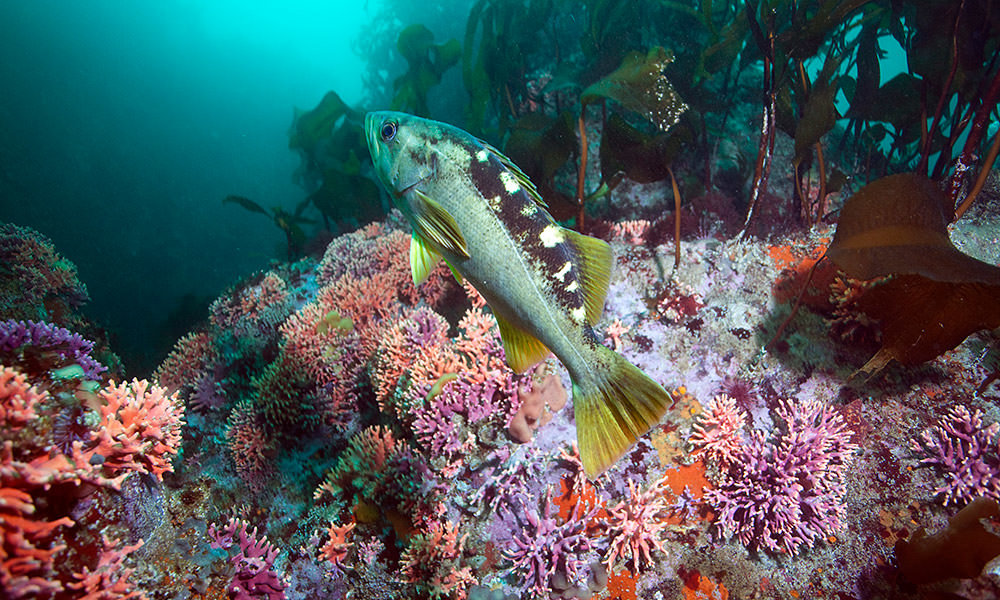
UPDATED March 2025:
Since this post was originally published, the Trump administration has laid off thousands of federal employees that provide critical services in Washington and beyond. Partners at NOAA, National Marine Sanctuaries, National Parks, National Wildlife Refuges, and many other federal agencies that are critical for managing our public lands and waters (and our access to them) were abruptly and unjustly fired. Help us fight back against these illegal layoffs by contacting your elected leaders and sharing personal stories of how you and your community rely on the services these agencies provide. You can read more about the impacts at the national level here, and contact your electeds via our national Action Alert.
The Crucial Role of NOAA Funding in Protecting Washington's Marine Resources
For most of us, talk of budgets and funding mechanisms puts us on the fast track to snooze land. But the reality is that money is often the limiting factor when it comes to conservation outcomes. So let’s dive into how federal funding for NOAA (National Oceanic and Atmospheric Administration) translates into on-the-ground benefits for Washington and the coastal places we love.

Gray whales are just one of many iconic species that call our Pacific water home
Supporting our superb sanctuaries
The National Marine Sanctuaries program is a global network of 18 marine protected areas (16 sanctuaries and two monuments), with four more proposed sanctuaries in the works. We are lucky to have the Olympic Coast National Marine Sanctuary (OCNMS) in our backyard. If you haven’t had a chance to visit, stop reading and go! I’ll wait…

Located off the northwest corner of the country, the OCNMS boasts some of the most epic views and incredibly productive marine waters around. These waters overlap with the four coastal treaty Tribes' Usual & Accustomed fishing grounds and hold over 200 shipwrecks for you maritime heritage enthusiasts out there.
Our local Sanctuary staff are dedicated, hardworking, and under-resourced, which is one of the many reasons we advocate for funding to support this often-overlooked program. They do a lot to provide educational resources to communities within and beyond the peninsula, from hosting events (like the recent 30th Anniversary Celebration!), providing K-12 curriculum for teachers, and investing in stewardship and outreach efforts such as hosting a science webinar series and building a new marine discovery center in Port Angeles.
Another part of the Sanctuary's efforts to protect our marine ecosystems is the Ocean Acidification Sentinel Site (OASeS). For more information on the recent OASeS Symposium I attended, check out this recent blog post.
*Surfrider holds a seat on the Sanctuary Advisory Council - there are currently two open positions on the SAC (the conservation alternate and marine industry primary) for those of you interested in getting more involved.
 An aerial view of a stretch of the Olympic Coast
An aerial view of a stretch of the Olympic Coast
Oceanographic monitoring
When many of us think about NOAA, we think about the weather. NOAA's oceanographic forecasting programs are indispensable tools for coastal communities and maritime economies, providing crucial information about tides, currents, and weather patterns. For surfers and beachgoers alike, having access to accurate forecasts can mean the difference between a safe, enjoyable day at the beach and being caught off guard by hazardous conditions. For people who make their living on the water, it's even more critical.
In addition to weather forecasting, NOAA's research initiatives contribute invaluable knowledge to our understanding of Washington's marine ecosystems. From studying the behavior of marine species to monitoring changes in water quality, this research forms the foundation of data-driven conservation efforts. A great example of this is NANOOS (Northwest Association of Networked Ocean Observing Systems), part of the International Ocean Observing System, a global network of people and buoys and sensors all working to provide real-time data on oceanic and Great Lakes conditions. By supporting NOAA-funded research projects, we can identify emerging threats to our marine resources and develop effective strategies to mitigate them.

You can explore the network of buoys and sensor arrays via the NANOOS data viewer
Providing funding for powerful partnerships
Not only do NOAA programs provide critical weather forecasting and oceanographic modeling used in everything from fisheries management to global shipping transit to understanding whale migration, but the agency also helps distribute funds to local agencies, groups, and Tribes. For example, a recent pilot project with Washington Coastsavers that explored the feasibility of recycling trash collected on beach cleanups was funded through NOAA’s Marine Debris Program. They also support Washington Seagrant, which provides a ton of resources and expertise to our communities. With the recent influx of funds from the Inflation Reduction Act and Bipartisan Infrastructure Act, they’ve helped distribute funds to coastal Tribes such as the Makah to enhance their marine mapping efforts.

A before and after shot of a large debris cache we removed as part of a NOAA grant-funded project through WA Coastsavers. The majority of this trash was recycled! Photo credit: National Marine Sanctuaries Foundation
Support the NOAA Budget!
These are just a few examples of how the boring but important impacts of federal budgets on our coastal communities here in Washington. The importance of these NOAA programs to Washington’s marine resources and coastal communities cannot be overstated. We are actively pushing Congress for more funding - here are just a few things YOU can do to help:
- Pick up the phone and make a quick call to your local electeds' offices (click the Congressional tab for federal electeds)
- Write a Letter to the Editor of your local newspaper highlighting the importance of the various NOAA programs to you and your community to help raise awareness
- Shamelessly tell your friends and neighbors about how you use NOAA resources every day
